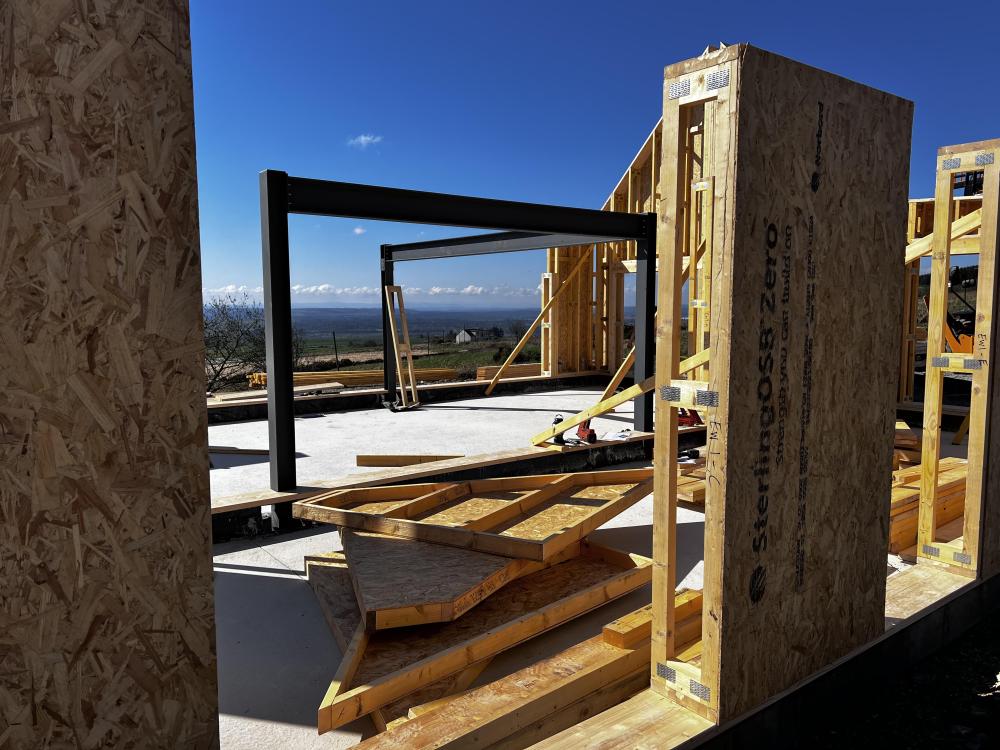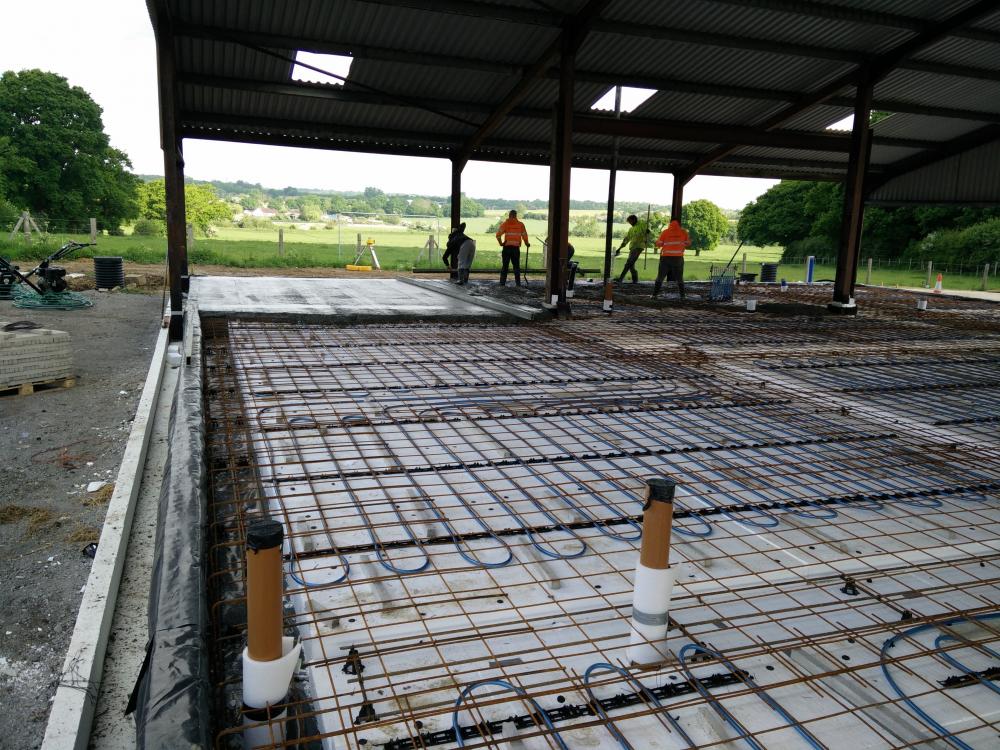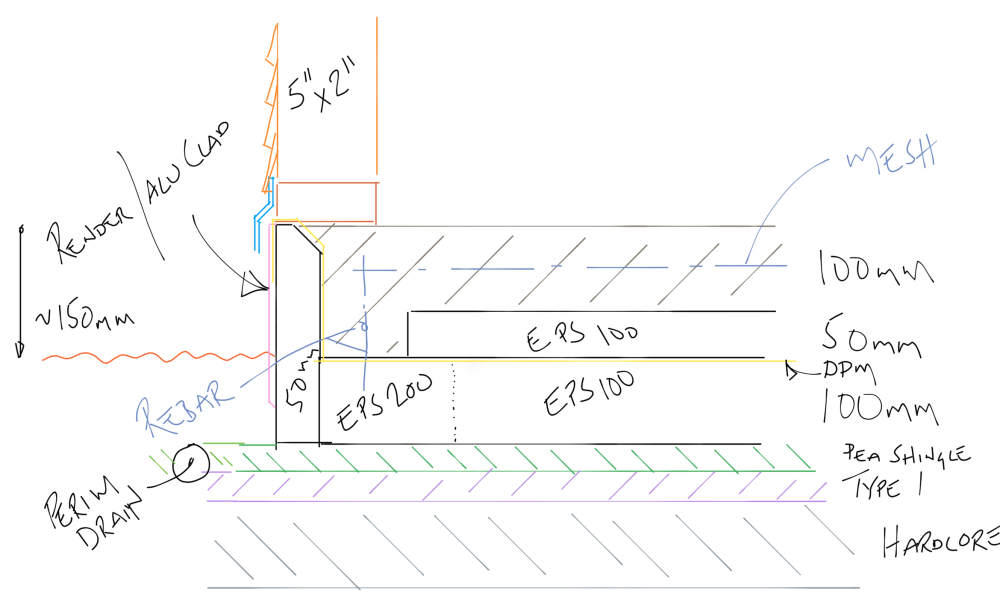Leaderboard
Popular Content
Showing content with the highest reputation on 04/19/23 in all areas
-
PVA in a bathroom is shite. Any hint of moisture and it'll re-wet making anything else on top, like tiles lift and come off. How far is the face of the wood from the face of the wall? Depending on depth, I'd be tempted to tack on some expanded metal mesh to the timber. Treat the wood with a killer/preserver too. Then render level and tank the lot. What's the plan in terms of finish for the walls and floor here?2 points
-
2 points
-
The benefit of a back inlet gulley for ground floor appliances over simply connecting them to a svp is that if the drain blocks the gulley overflows outside. Without a gulley the first you know of it is when the appliance itself stops draining and you have sink full of yuk. Both work but a BIG is also useful for pouring away horrible stuff in buckets................2 points
-
You could probably just get your handsaw and hack it out........ probably. Please let us know what happens.............1 point
-
The Oxford Dictionary advises: “Do not confuse draft with draught. Draft means 'a first version of a piece of writing' or 'make a first version of a piece of writing' (I drafted a letter of complaint), whereas draught chiefly means 'a current of air' (heavy curtains cut out draughts).”8 Apr 20111 point
-
Hello, We're starting the process of adding an extension to our house and need to make a decision about sliding doors. We've been looking at Origin, but have also been recommended Cortiza which is much less expensive. Any thoughts? Thanks1 point
-
Wind chill, in part, is caused by evaporation taking a disproportionate amount of energy from a material. Why a wet bulb is used. I would have thought that as long as the concrete is covered over to stop excessive evapotranspiration, it would not make much difference. Covering over may help trap solar radiation, which may help or hinder. As I am sure @saveasteading has mentioned in the past, the concrete people generally know their business, the builders often don't know concrete. In the aviation composite industry it is normal to embed thermocouples into the moulding during manufacturing. These are then monitored to make sure correct curing happens. I know a foundation is not quite as safety critical, but I am surprised this is not done on large pours. Or maybe it is.1 point
-
Wind chill doesn't count as such. But the concrete will take a long time to "go off" at lowish temperatures like 7°, and wind over the surface will dry it and cool it which is not good. So you must protect it with polythene or hessian to keep the moisture in, once the surface is stiff. (Always, but esp if windy).1 point
-
Ah. That picture shows more depth / detail. That looks like a sole plate. What is the depth of it? Prob say screw a plasterboard to it and leave it there if the walls been built up off it. Sooo many bloody daft / weird things done by our predecessors when building, it’s hard to keep track. Plasterboard, ( MR ), and plenty of screws.1 point
-
As long as you are no more than 2.5 50 mil will free stand With two layers of PB Don’t forget to stagger each layer Then stagger opposite on the other side1 point
-
In defence of @Radian I did much the same. My immersion (similar design) cur out at I think it was about 62 degrees with the thermostat at max. So I made pretty much the same adjustments. Each time I raised the "thermostat range" I tried it, using the ASHP's probe to measure the new cut off temperature. I stopped adjusting when it would reach 78 degrees and then cut out. That is still well below any danger level but allows quite a bit more surplus PV to be stored in the tank. All I would say is if you try such a thing, you need an independant, trusted means to measure the temperature your thermostat cuts out after being "adjusted"1 point
-
The essence of your question is "what size ducts, plenums and vents do I need" and the answer is "it depends on the size of the FCU and the air speed". The issue is less about draughts and more about noise and having a functional system. A PAW-FC-D15-1 fan coil has an outlet 570x220 (0.125m2) and shifts about 260 m3/h, so the air is moving at about 2 km/h when its on full speed. Put that through a 10cm pipe and outlet (0.007 m2) and it will have to go 33km/h or 15x the air speed as it does at the FCU outlet. That's going to be noisy and throttle the output considerably. But if you use 250mm pipe and a 500x100mm linear outlet (0.05m2) that's "only" 2.5x smaller than the fancoil outlet size so airspeed 5km/h is within ballpark of working ok. (Learnt this the hardway. On that FCU I originally used a 125mm outlet and it was pants. I now have 250mm ducts into a 200x1000 linear diffuser and it's great). I don't think linear diffusers are intrinsically less draughty it's just they can cover a larger area without being dog ugly. A 250mm circular outlet vent looks like a 1980s office. (A linear diffuser looks like a 2010s office)1 point
-
yeh thanks i stupid make mistake in diagram the sand is under the DPM thanks cheers1 point
-
In my section I showed the DPM between the top and second layer, to get the ring-beam filled without any voids. The problem this can cause is the top layer of EPS "floating" up if you pour into the ring-beam first. The easy answer is to pour on to the top layer first, to weigh it down and allow the concrete to them flow into the ring-beam from the top surface. You can see the DPM on my slab coming out from under the top layer of EPS, along the bottom of the ring-beam then up and over the upstand: The sub-base layers in my section total 200mm from the bottom of the hardcore (which should be sitting on a geotex membrane) to the underside of the first layer of EPS. For the top layer I wouldn't use anything as big as 20mm-25mm, I'd use 10mm pea shingle or granite chippings, but importantly, "no fines" to ensure it is free draining. There should be a perforated pipe within this layer, around the periphery, to drain away any water that collects in the sub-base. EPS is fine getting wet, as in it doesn't absorb any moisture, but if it's sitting in water up to the DPM it may as well not be there in insulation terms. The layer itself doesn't need to be any more that 30mm - 40mm, thick, although make it a bit deeper at the edge where the land drain is so that the perforated pipe is fully enclosed in the pea shingle/granite chippings. There's no need to compact this layer. The MOT Type 1 is also a relatively thin layer, just to level the hardcore and get it compacted. Around 30mm - 40mm thick again is fine. 40mm crushed hardcore for the bottom layer, around 120mm - 150mm thick. The dig for this build up could be as shallow as 300mm deep from grass level, to get the FFL 150mm above.1 point
-
It’s the ‘ground’ the timber batten to let you nail a skirting to the wall, if it’s not required, remove and fill as others have advised too1 point
-
Nope. Chop it out, replace with plasterboard, and do it properly Plaster and wood = no Bueno. The likelihood is, that it is not very well secured so will have a bit of movement, and plastering over it will end badly. If you're tiling why not cut this out, clip the cable back, and apply a bonding coat or rough it back in with some sand and cement 'compo'? Needs to go. 👉1 point
-
I think you need to outline exactly what you are hoping to achieve and what you've currently agreed regarding terms with your contractor/builder. Here's my very simplified view on this topic, and the replies on this thread. There are typically two types of routes the average self builder goes down: 1. Large, primary contractor 2. Smaller family/local builder I think there's a disparity of expectation here. The self builder will look to the large primary contractor because of the reduction in risk, capacity for dealing with problems, resource they might throw at it, dedicated project managers etc etc. But with that, likely, comes a higher cost. The smaller/family/local builder is probably the opposite of that, but obviously comes in at a reduced cost. What I would expect here, and what happens in most other industries, is that the supplier provides contractual terms and conditions. This is because they are the ones that deliver the service and therefore they need to formulate their capability to deliver, what their liability is, how their contract feeds into their indemnity insurances etc etc. I don't know of any industry where the customer brings/formulates a suggested contract/delivery terms to a supplier. Granted, there's always scope for negotiation and tweaking terms, but it's generally the supplier that provides their contract. I think the problem with some of the comments in this thread is that self builders are choosing the smaller/local/family builders, but then attempting to overlay onto them a set of (often) onerous contract terms. My point that I've referred to repeatedly, is that I don't believe this works. Even if this small builder agrees to your terms, the likelihood is your project/build is maybe only one or two that they have on the go. In the event that something disastrous happens and you come to attempt to rely on those terms, what's the likelihood of legal success? Will you have a day in court, or will your contractor likely fold and phoenix, as it's a much more cost effective route. Larger contractors that do have their terms (or adopt JCTs etc) will typically have a fairly hefty insurance policy/Professional Indemnity cover that backs their capability to defend any legal action you might take - and actually means that in the event that you're right, and they messed up, and you need compensating or making whole, their PI cover picks this up. Smaller builders just don't have this. It's why I said, earlier in the thread, that selecting a contract and enforcing it, or even proposing it on your smaller builder just doesn't make logical sense to me. With a larger contract, and a larger contractor, you don't need a huge amount of trust. You could even pay in advance knowing if you get shafted, you can sue and get your money back. With a smaller builder - get referrals, pay in arrears, built trust as you go, inspect often etc. TLDR: If your contractor doesn't already have a suggested contract/engagement/terms likelihood is they don't have an insurance policy that would back this up in the event you legally needed to refer to it.1 point
-
Scottish larch, coated with Rye oils ceder oil, way cheaper than osmo, equally as good. Real stone cladding - blue stone.1 point
-
Adding insulation under a beam & block floor changes it from a suspended floor to a ‘solid’ floor. This is OK provided there is a correctly detailed DPM under the insulation - possible in a new build but impossible in a refurb or upgrade. The Energystore system is approved for new build only, not upgrade work. As above, an expensive solution looking for a problem.1 point
-
I have not come across this formula before, do you have a reference? I don't know my flow rate, in fact I have two pumps so potentially two different flow rates, one from the heat pump to the buffer and one from the buffer around the radiators.1 point
-
We have a licence for our telehandler. It maybe a TV licence but it seems quite effective.0 points
-
How are you getting on with this @Onoff. Was this on a solid or cavity wall? Any problems with moisture?0 points
-
I learnt a long time ago after reading many threads on avforums that audiophiles generally talk out of their arses. the 'normal' person won't notice many of the differences that they often talk about and so it's best to take their reviews with a pinch of salt!0 points











